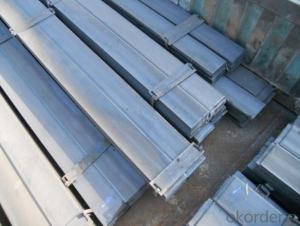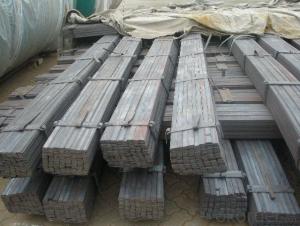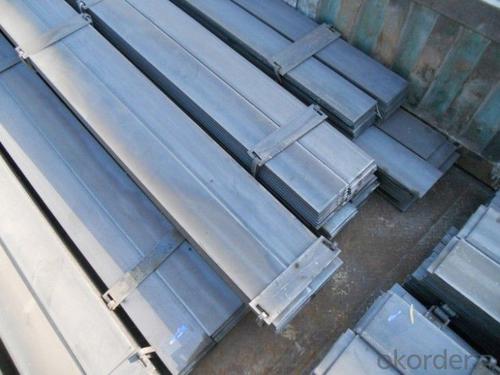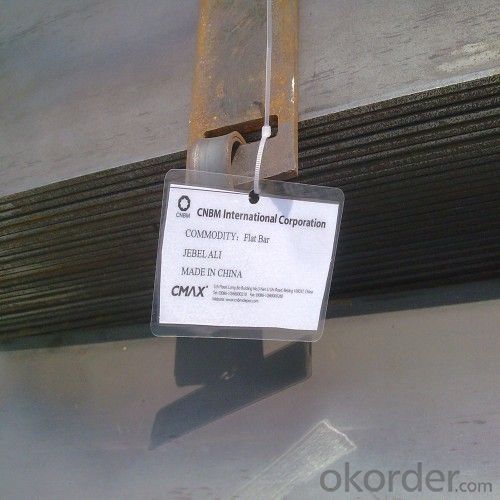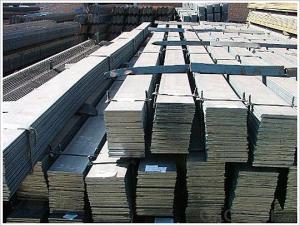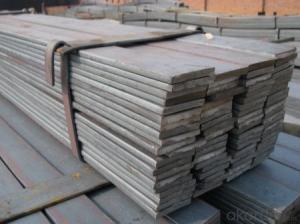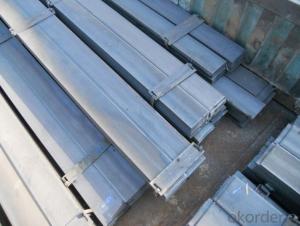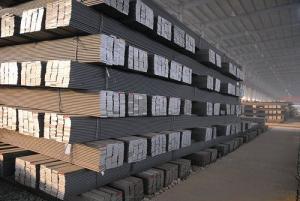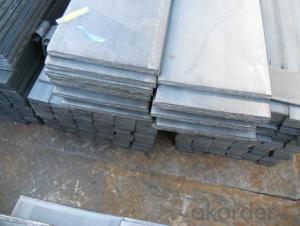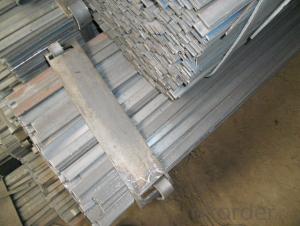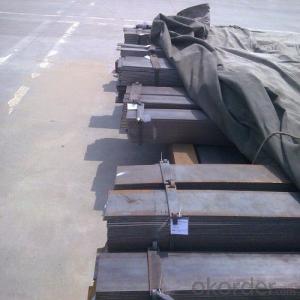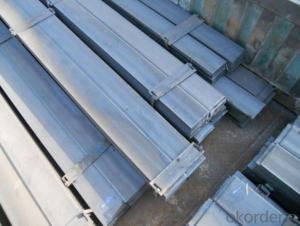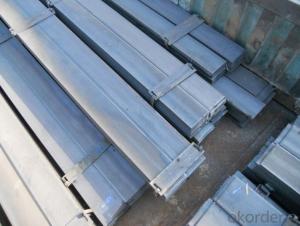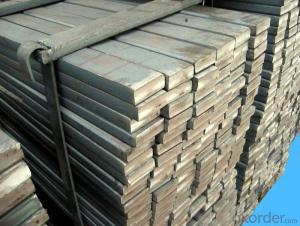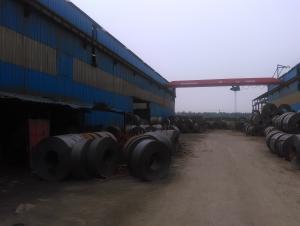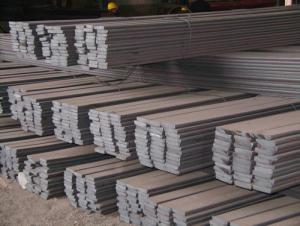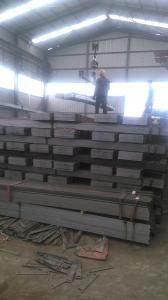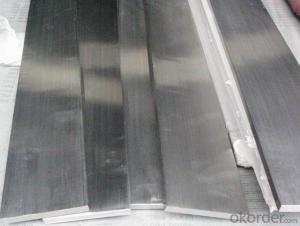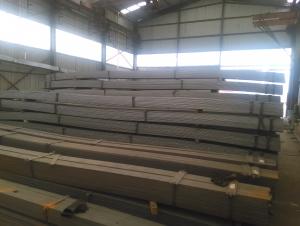Hot Rolled Flat Bars in Material Grade Q235 With Good Price
- Loading Port:
- Tianjin
- Payment Terms:
- TT OR LC
- Min Order Qty:
- 25 m.t.
- Supply Capability:
- 10000 m.t./month
OKorder Service Pledge
OKorder Financial Service
You Might Also Like
Product Description:
OKorder is offering high quality Flat Bar at great prices with worldwide shipping. Our supplier is a world-class manufacturer of steel, with our products utilized the world over. OKorder annually supplies products to European, North American and Asian markets. We provide quotations within 24 hours of receiving an inquiry and guarantee competitive prices.
Product Applications:
Flat Bars are ideal for structural applications and are widely used in the construction of buildings and bridges, and the manufacturing, petrochemical, and transportation industries.
Product Advantages:
OKorder's Flats Bar are durable, strong, and resist corrosion.
Main Product Features:
· Premium quality
· Prompt delivery & seaworthy packing (30 days after receiving deposit)
· Corrosion resistance
· Can be recycled and reused
· Mill test certification
· Professional Service
· Competitive pricing
Product Specifications:
Manufacture: Hot Rolled
Grade: Q195 – 235
Certificates: ISO, SGS, BV, CIQ
Length: 6m – 12m, as per customer request
Packaging: Export packing, nude packing, bundled
Chemical composition of Q235
Alloy No | Grade | Element(%) | ||||
C
| Mn
| S
| P
| Si
| ||
Q235
|
B
|
0.12—0.20 |
0.3—0.7 |
≤0.045 |
≤0.045
|
≤0.3
|
Physical properties of Q235
Alloy No | Grade | Yielding strength point(Mpa) | Tensile strength (Mpa) | Elongation after fracture(%) | ||||||
Thickness (mm) | Thickness (mm) | |||||||||
≤16 | >16--40 | >40--60 | >60--100 | ≤16 | >16--40 | >40--60 | >60--100 | |||
≥ | ≥ | |||||||||
Q235 |
B |
235 |
225 |
215 |
205 |
375--500 |
26 |
25 |
24 |
23 |
FAQ:
Q1: How soon can we receive the product after purchase?
A1: Within three days of placing an order, we will begin production. The specific shipping date is dependent upon international and government factors, but is typically 7 to 10 workdays.
Q2: How do we guarantee the quality of our products?
A2: We have established an advanced quality management system which conducts strict quality tests at every step, from raw materials to the final product. At the same time, we provide extensive follow-up service assurances as required.
Q3: The products are invoicing on theoritical weight or on actual weight?
A3: We can do it in both manners, according to buyers' requiremnet.
Images:
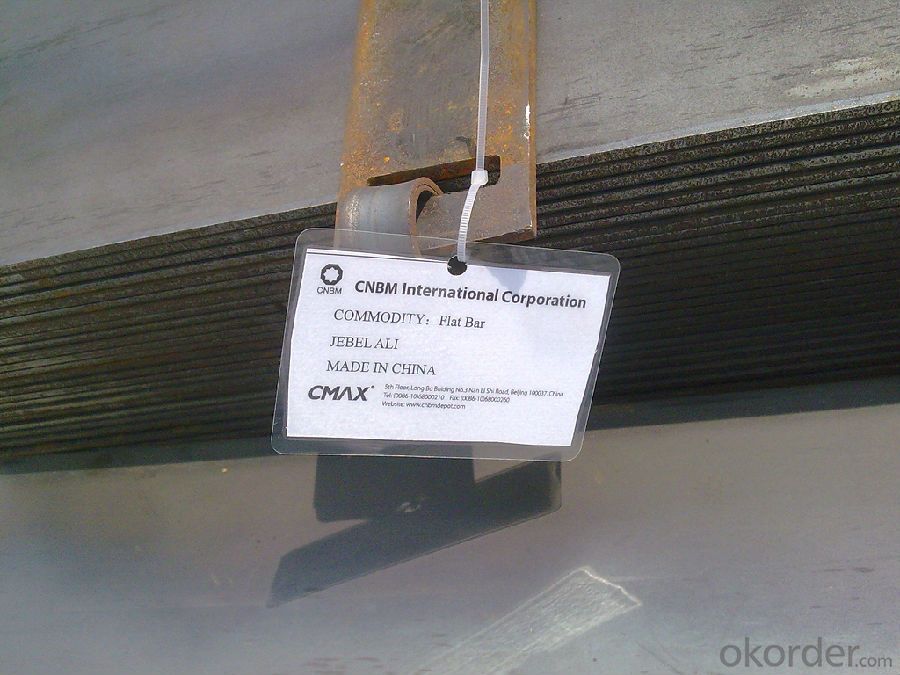
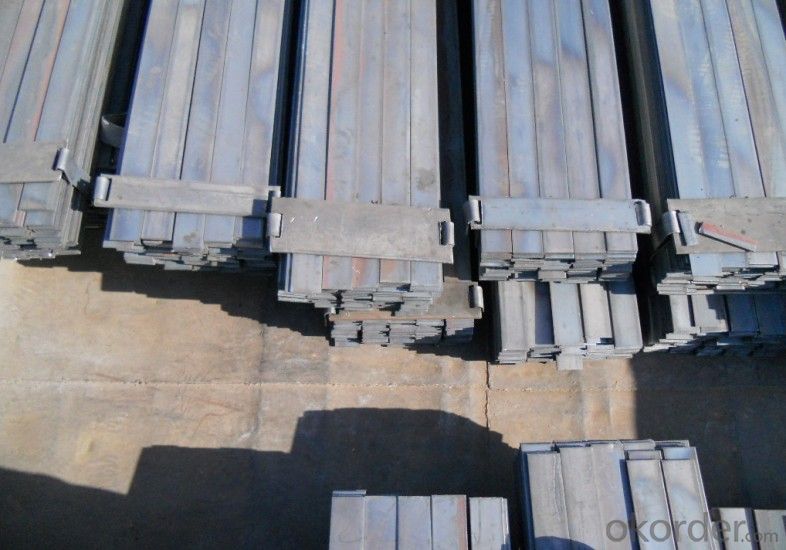
- Q: How do you remove rust from steel flat bars?
- One effective method to remove rust from steel flat bars is by using a wire brush or sandpaper to scrub the affected areas. After removing the loose rust particles, applying a rust converter or chemical rust remover can help dissolve any remaining rust. Finally, thoroughly clean and dry the steel bars before applying a protective coating, such as paint or a rust inhibitor, to prevent future rusting.
- Q: Are steel flat bars suitable for fabrication of brackets or supports?
- Absolutely, steel flat bars are indeed appropriate for fabricating brackets or supports. Renowned for their strength, durability, and versatility, steel flat bars are an outstanding choice for numerous applications, including the construction of brackets and supports. The flat shape of steel bars facilitates effortless fabrication and manipulation, simplifying the creation of brackets or supports in diverse shapes and sizes. Moreover, steel boasts high resistance to deformation, ensuring that the brackets or supports will remain robust and dependable over time. Furthermore, steel flat bars possess exceptional load-bearing capabilities, rendering them suitable for supporting heavy loads or providing structural stability. This is particularly crucial in scenarios where brackets or supports must withstand substantial pressure or weight. Additionally, steel flat bars can be effortlessly welded, bolted, or securely attached to other structures, guaranteeing a reliable and steadfast connection. This permits the fabrication of brackets or supports that can be seamlessly integrated into existing frameworks or structures. To sum up, steel flat bars are an appropriate and favored choice for fabricating brackets or supports due to their strength, durability, versatility, and ease of fabrication. Whether for industrial, commercial, or residential applications, steel flat bars offer a dependable and long-lasting solution for diverse bracket or support requirements.
- Q: How do steel flat bars perform in terms of UV resistance?
- Steel flat bars do not have inherent UV resistance properties. This means that when exposed to ultraviolet (UV) radiation from sunlight, steel flat bars can experience negative effects. Over time, prolonged exposure to UV rays can cause steel to degrade and become brittle. This can result in discoloration, oxidation, and structural weaknesses in the steel flat bars. To mitigate these issues and improve UV resistance, various methods can be employed. One common approach is to apply protective coatings to the steel surface, such as paint or specialized finishes. These coatings act as a barrier, shielding the steel from direct UV exposure and preventing degradation. Additionally, stainless steel flat bars can exhibit better resistance to UV radiation compared to carbon steel. Stainless steel contains chromium, which forms a passive oxide layer that provides some level of natural UV protection. However, it is important to note that even stainless steel can still be affected by long-term exposure to intense UV rays. Ultimately, when considering steel flat bars for outdoor or UV-exposed applications, it is crucial to take into account the specific environment, level of UV exposure, and the need for additional protective measures to ensure the longevity and performance of the steel flat bars.
- Q: How are steel flat bars priced?
- Steel flat bars are typically priced based on several factors including the cost of raw materials, manufacturing processes, market demand, and competition. Other factors such as size, length, quality, and any additional treatments or finishes may also influence the price. Overall, the pricing of steel flat bars is determined by a combination of these factors in the market.
- Q: How do you clean and maintain steel flat bars?
- To clean and maintain steel flat bars, start by removing any loose dirt or debris using a soft brush or cloth. Then, mix a mild detergent with warm water and use this solution to wipe the surface of the bars thoroughly. Rinse them with clean water and dry them completely to prevent rust formation. To maintain the steel bars, apply a thin coat of protective oil or wax to prevent corrosion and keep them looking polished. Additionally, regular inspections for any signs of damage or wear are crucial to address potential issues promptly.
- Q: What are the different types of defects that can occur in steel flat bars during manufacturing?
- Some common defects that can occur in steel flat bars during manufacturing include surface cracks, internal voids or inclusions, dimensional variations, and uneven surface finish.
- Q: What are the different sizes of steel flat bars?
- Steel flat bars come in a variety of sizes to suit different applications and requirements. Common sizes of steel flat bars include 1/8 inch thick by 1/2 inch wide, 1/4 inch thick by 1/2 inch wide, 3/8 inch thick by 1/2 inch wide, and 1/2 inch thick by 1/2 inch wide. However, these are just a few examples, as steel flat bars can be found in a wide range of thicknesses and widths. Some larger sizes may include 1 inch thick by 4 inches wide or even larger. The specific size of a steel flat bar needed will depend on the intended use, load-bearing capacity, and the desired strength of the steel. It is important to consult a steel supplier or reference an industry standard to determine the appropriate size for a specific application.
- Q: What is the thickness tolerance for steel flat bars?
- The thickness tolerance of steel flat bars may differ based on the specific grade and manufacturing standard being adhered to. However, as a general rule, the industry standard tolerance for steel flat bars usually ranges from +/- 0.005 inches (0.127mm) to +/- 0.010 inches (0.254mm). This implies that the actual thickness of a steel flat bar can deviate within this range from the designated nominal thickness. To determine the exact tolerance requirements for the steel flat bars under consideration, it is crucial to refer to the relevant manufacturing standard or supplier specifications.
- Q: Are steel flat bars suitable for machining or drilling?
- Machining and drilling find steel flat bars to be a suitable option. The strength and durability of steel make it effortlessly moldable, cuttable, and drillable into diverse shapes. Especially, flat bars offer a stable and inflexible surface, enabling meticulous and precise cuts during machining operations. Employing proper tools and techniques, one can effortlessly create holes of various sizes and shapes by drilling steel flat bars. No matter if one aims to make prototypes, construct machinery, or engage in any other endeavor that demands accurate shaping and drilling, steel flat bars prove to be a dependable selection.
- Q: What is the difference between hot-rolled and cold-drawn steel flat bars?
- Hot-rolled and cold-drawn steel flat bars are both widely used in various industries, but there are key differences between them. Hot-rolled steel flat bars are produced by heating a billet or slab of steel to a high temperature and then rolling it into the desired shape, such as a rectangle or square. This process allows for larger sizes and quantities to be produced quickly and efficiently. Hot-rolled steel bars have a rougher surface and may have mill scale or a slight oxide layer due to the high temperature involved in the manufacturing process. On the other hand, cold-drawn steel flat bars are created by pulling a hot-rolled steel bar through a die at room temperature. This process helps to improve the dimensional accuracy, surface finish, and mechanical properties of the steel. Cold-drawn steel bars have a smoother surface and tighter tolerances compared to hot-rolled bars. They also have a higher yield strength and tensile strength, making them suitable for applications that require enhanced strength and precision. Due to their different manufacturing processes, hot-rolled steel flat bars are generally more cost-effective and readily available in larger sizes and quantities. They are commonly used in construction, manufacturing, and general fabrication applications where surface finish and tight tolerances are less critical. In contrast, cold-drawn steel flat bars are preferred for applications that require higher precision, tighter tolerances, and improved mechanical properties. They are commonly used in industries such as automotive, aerospace, and machinery manufacturing, where strength, dimensional accuracy, and surface finish are crucial factors. In summary, the main differences between hot-rolled and cold-drawn steel flat bars lie in their manufacturing processes and resulting properties. Hot-rolled bars are cost-effective and readily available in larger sizes, while cold-drawn bars offer improved precision, tighter tolerances, and enhanced mechanical properties. The choice between the two depends on the specific requirements of the application and the desired balance of cost, strength, and surface finish.
Send your message to us
Hot Rolled Flat Bars in Material Grade Q235 With Good Price
- Loading Port:
- Tianjin
- Payment Terms:
- TT OR LC
- Min Order Qty:
- 25 m.t.
- Supply Capability:
- 10000 m.t./month
OKorder Service Pledge
OKorder Financial Service
Similar products
Hot products
Hot Searches
Related keywords
